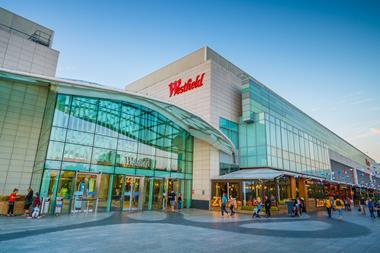As the holidays approach, every parent’s car journey nightmare is kids at the end of their tether with choruses of “Are we there yet?” REIT share prices are being defined by stubborn inflation but the UK, it seems, is also nowhere near arriving at the 2% target.

There are three flavours of inflation with the US (wage), Europe (energy) and global (food), but the UK is an unlucky blend of all three, and while US inflation is sub-3% and Europe around 6%, the UK is hugging 9%.
If you own your home and are not looking to buy a used car, inflation is potentially tolerable. Profit-led inflation is the last of three waves. Transitory demand-led inflation is in deflation (prices falling) and energy-/supply-led inflation in disinflation (prices rising at slower rates).
The focus is food inflation at 16.5% and Morrisons has reduced prices of 50 products by 25% for eight weeks. The chief executives of the UK’s big four supermarkets were questioned by parliament but rejected the industry was a cartel profiteering from soaring food prices despite overcharging by 6p per litre for fuel.
Central bankers at the European Central Bank symposium in Sintra, Portugal, adopted a hawkish tone. Federal Reserve chair Jerome Powell said more rate hikes (plural) were likely and Bank of England governor Andrew Bailey said “the market, I don’t think, thinks we’re nearly done at the moment” with interest rate cuts looking likely to be pushed back into 2025.
Residential mortgage refinancing arguably makes base rates peaking above 6% less likely with 57% of mortgages refinanced this year typically from 2% to 6% on two-year fixes. Abstention from home ownership is pushing up rental growth to 6% per year versus a 3%-per-year trend benefiting Grainger and PRS REIT.
The MSCI All-Property yield index stabilised at 5.3%. REITs have been hoping inflation can be tamed without inducing an economic recession, but history suggests otherwise, and valuers’ cap rate assumptions are likely to drift up if rents do soften.
Rents beating valuers’ estimated rental values are of little practical use when lower than passing rents. REIT shares, trading at 50% discounts to net asset value (NAV) with gearing at 30% loan to value (LTV), are pricing 5% net initial yielding portfolios at 7.5% ‘see-through’ yields. If valuers do not offer up price discovery, then debt markets probably will.
Landsec purchased intu’s 50% share of the St David’s Centre, Cardiff, by buying the secured debt at 9.7%; which is probably the right yield. The problem is REITs only have a circa 5% share of the UK commercial real estate market and are price takers with refinancing cliffs concentrated in the private market.
The portfolio see-through yields of Landsec and British Land portfolios are back to October 2022 levels when 10-year gilts soared to 4.3% on the mini-Budget. From October 2022 to February 2023, REITs rallied 35% as 10-year gilts fell to 3%, but are now back to 4.3% and the REIT index has retraced back to 45% discounts to NAV.
Using the rule of thumb that today’s REIT share price is estimating next year’s NAV, the implied LTV gearing ratio for Landsec is 44% and British Land is 53%, which we believe these businesses can withstand but shareholders are likely to show less forbearance.
There is no visible distress in the UK market yet, but LXi REIT expects buying opportunities from “permanent structural change within open-ended funds”, “cliff edge of refinancing events for corporates” and “M&A in the long-income market, due to share price discounts”.
Cheap buildings attract competitive bidding, but corporate acquisitions have a due-diligence headstart. The REIT sector remains overpopulated with too many subscale operators owning too many assets. The obstacle is that boards want bids at NAV, but these are still a lagging indicator despite the Gray report’s recommendations.
With buildings yielding less than the cost of debt financing, it is back to rediscovering those pre-global financial crisis property skills of active portfolio management and lease regearing. The ‘issue, spend, repeat’ business model appears to be on hold for the time being.
Liquidity is seeping back to investment markets. Brookfield has re-entered the London office market buying the long leasehold of 77 Grosvenor Street, Mayfair, for around £100m and Lothbury’s 55 St James’s Street is being readied for sale at £76m on a NIY of 3.6%. All encouraging signs.
The London office sink hole of value is Canary Wharf, which in the 1990s was billed as “it will feel like Venice and work like New York” as City spill-over space 5km east. The rents never closed from the 25% discount to prime City despite the Jubilee line integrating into the London tube network, with 20 Canada Square and 5 Churchill Place now in administration.
Great Portland Estate’s pipeline ‘win’ was repatriating Clifford Chance from Canary Wharf to its Aldermanbury Square scheme, and HSBC is following to smaller City premises in 2026.
Sam Zell (1941-2023) was the father of the modern US REIT model, and sold Equity Office Property for $39bn (£30bn) in 2007 but then shied away from traditional office and retail assets. Zell bequeathed portfolios of logistics, healthcare, manufacturing and agribusiness, aligned with our preferred beds, meds and sheds sector we identified in 2015.
Mike Prew is managing director at investment banking firm Jefferies





























No comments yet